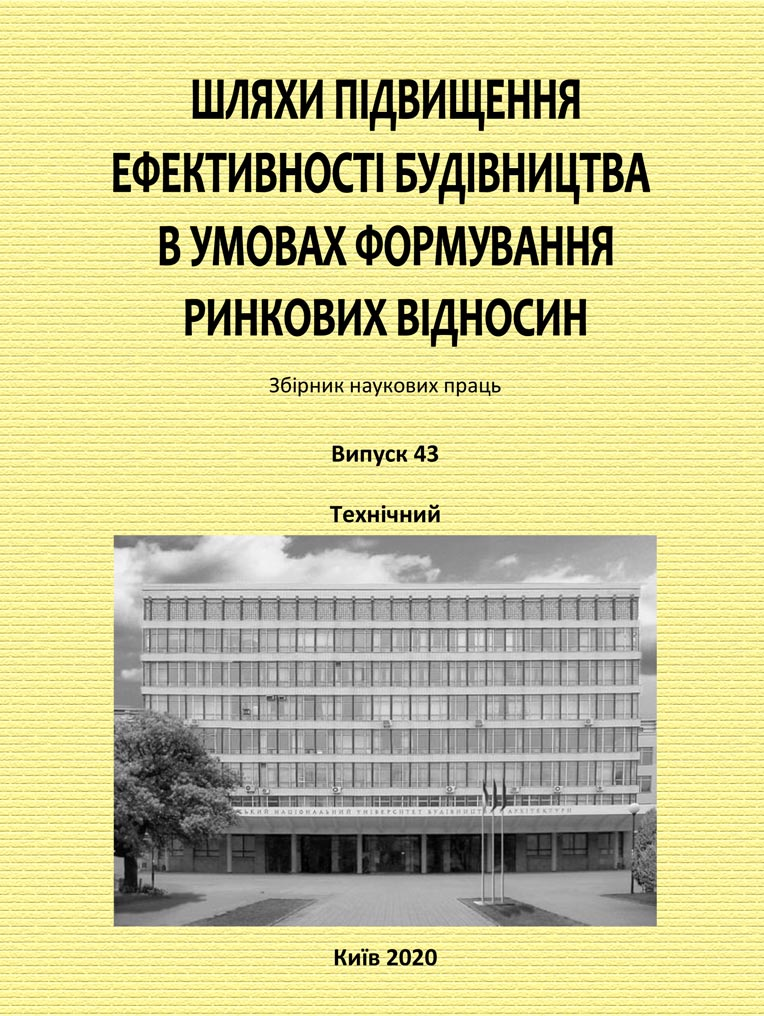Consideration of the energy efficiency class of a residential building in parametric pricing
DOI:
https://doi.org/10.32347/2707-501x.2019.42.19-25Keywords:
arametric pricing, energy efficiency, correlation analysis, regression equations.Abstract
In Ukraine, new requirements for the design of buildings and structures are introduced, the basis of which are parametric design methods, that is, when not fixed fixed signs, sizes, norms are specified, but parameters that the project must meet. Today, there is a need to develop conceptual provisions for parametric pricing and to calculate individual parameters of buildings and structures on a new basis, among which the need to provide a given class of energy efficiency is particularly prominent.
The purpose of the article is to substantiate the impact of the energy efficiency of a building on the market price of its implementation and to create appropriate dependencies on the basis of a widely known and well-tested method of correlation-regression analysis.
The calculated regression equation for the dependence of the energy efficiency of a dwelling house on the set of engineering and technical design solutions: Twenty-seven variants of increasing the energy efficiency class of a house in the following main directions (factors of the model X1-xrodes): (various variants of wall insulation), thermal insulation of engineering communications, installation of modern windows and balcony doors, thermal insulation cons ruktsiy roof. Of these four factors, the most influential factor was X2 (thermal insulation of engineering communications), the least influential was X4 (thermal insulation of roof structures).
The coefficient of determination of the obtained equation, which is equal to 0,888, shows that the impact of other factors on the level of energy efficiency that has been left out of the equation is only 11,2%. That is, the equation covers the lion's share of the impact factors, so it can and should be used in assessing the impact of engineering solutions on the energy efficiency class.
The dependence of the market price of the object on the level of its energy efficiency is determined, which can be used as a parametric series in pricing.
References
1. DSTU B D. 1.1 – 1; 2013 Pravyla vyznachennia vartosti budivnytstva. Kyiv. Minrehion Ukrainy;
Zakon Ukrainy «Pro enerhetychnu efektyvnist budivel. «Tsinoutvorennia u budivnytstvi», 2017,11, 4 – 33
DBN V.2.6-31.2016 “Teplova izoliatsiia budivel”. URL: https://dbn.co.ua/load/normativy/dbn/1-1-0-13
Rozrobka enerhetychnykh pasportiv budynku. URL: https://www.nzeb.com.ua/ua/designing/developing/developing.html
5. Minrehion proponuie buduvaty zhytlo z klasom efektyvnosti ne nyzhche S. URL: http://ecolog-ua.com/news/minregion-proponuye-buduvaty-zhytlo-z-klasomenergoefektyvnosti-ne-nyzhche
Parametrycheskoe tsenoobrazovanye. URL:http://www.grandars.ru/college/cenoobrazovanie/parametricheskoe-cenoobrazovanie.html
Downloads
How to Cite
Issue
Section
License
Copyright (c) 2020 E. Izmaylova

This work is licensed under a Creative Commons Attribution 4.0 International License.
Authors who publish with this journal agree to the following terms:
- Authors retain copyright and grant the journal right of first publication with the work simultaneously licensed under a Creative Commons Attribution License that allows others to share the work with an acknowledgement of the work's authorship and initial publication in this journal.
- Authors are able to enter into separate, additional contractual arrangements for the non-exclusive distribution of the journal's published version of the work (e.g., post it to an institutional repository or publish it in a book), with an acknowledgement of its initial publication in this journal.
- Authors are permitted and encouraged to post their work online (e.g., in institutional repositories or on their website) prior to and during the submission process, as it can lead to productive exchanges, as well as earlier and greater citation of published work (See The Effect of Open Access).

